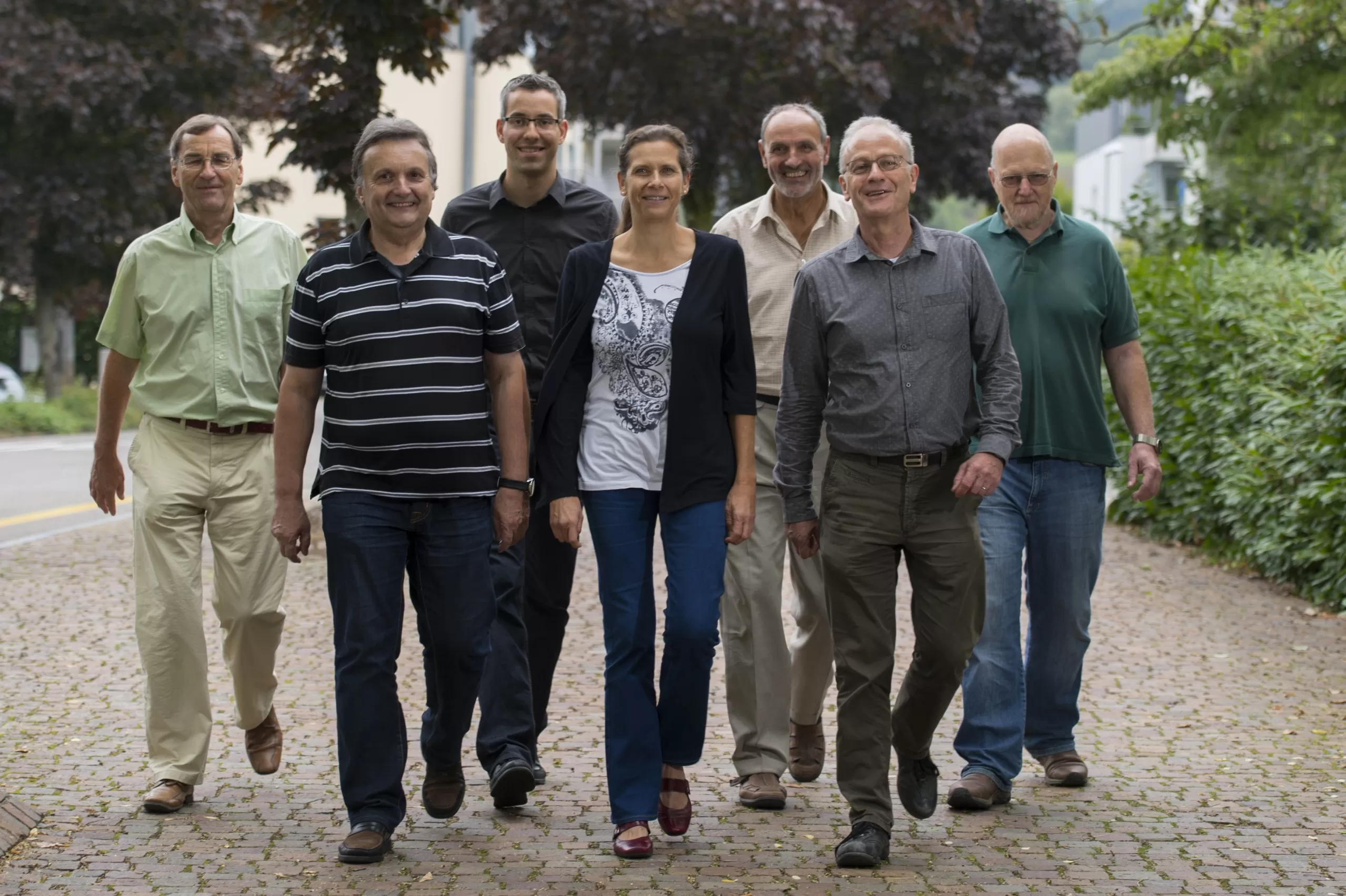
3D seismic Jura Ost – Every landowner will be contacted personally
These surveys form part of the safety-related investigations within the context of the Sectoral Plan for Deep Geological Repositories. The permit clears the way for Nagra to start preparations for the measurement campaign. From next week, a six-person team will be underway in the Bözberg area to provide information personally to the affected landowners and tenants. The measurements will begin at the end of September.
«My team will start next week in the Villigen / Mandach area and will gradually cover the whole of the Jura Ost region», says team leader Hanspeter Weber, a geologist with Nagra. In more detail: «For around a month, we will go from door to door from Monday to Saturday and each of us will conduct several discussions a day.» A total of around 1200 landowners have to be informed about the investigations. The six team members are mostly current or retired Nagra staff who have a connection to the region and will be responsible for addressing the concerns of the landowners and tenants. The external seismic expert Michael Sonderegger has responsibility for the overall coordination of the campaign. For questions or concerns, he can be reached via the free hotline 0800 437 333 and by mail via seismik@nagra.ch.
Once all the landowners have been informed, the surveyors will start their activities in the field. They map all the points where waves will be generated using vibrator vehicles or where measuring instruments (geophones) will be placed. These locations are marked with wooden pegs. The measuring instrumentation is then laid out, mainly in fields and forests, where it will remain for up to three weeks at one location. The 3D seismic investigations are currently planned to begin at the end of September.
An area covering around 100 square kilometres will be investigated in the Jura Ost region. The vibrator vehicles will travel mainly on road and path networks. The measuring principle is similar to echo sounding on ships: vibrator vehicles generate weak seismic waves at the surface and these are partly reflected at the boundaries between different rock layers deep underground. The reflected components of the waves are registered at the surface using highly sensitive geophones. 3D seismic surveys provide an areal image of the underground to a depth of more than a kilometre. The results are important for clarifying safety-related questions in the context of site selection for the geological repositories.
Once the measurements are complete and the clean-up work has been done, Hanspeter Weber’s team will visit the landowners again: «We want to be sure that everything is left in order and cleared up properly», says Weber.
The investigations in the Jura Ost region will last from the end of September to around the middle of December. Surveys will then be carried out in the Zürich Nordost region. Information events will be held for the public.
According to Swiss nuclear energy legislation, the producers of radioactive waste are responsible for its safe management and disposal. In 1972, the nuclear power plant operators and the Federal Government set up the National Cooperative for the Disposal of Radioactive Waste (Nagra) to perform this task. Nagra, which has its headquarters in Wettingen (AG), is the national technical competence centre in the field of deep geological disposal of radioactive waste.
Out of a strong sense of responsibility for the long-term protection of man and the environment, 100 employees are involved daily in performing this important work. The high level of competence is secured by targeted research programmes in two Swiss underground rock laboratories and intensive international collaboration.